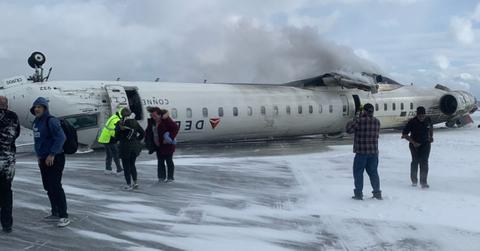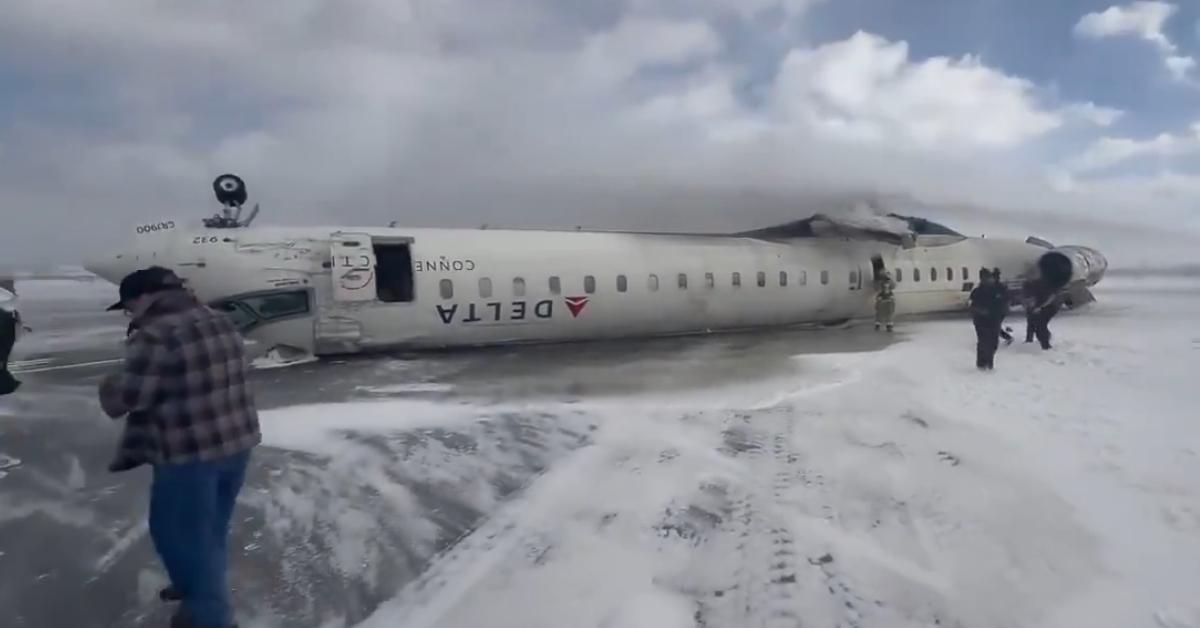Delta Flight Flips Upside Down During Landing — Here's What Might Have Caused It
Experts believe the weather conditions contributed to the Delta plane flipping.
Published Feb. 18 2025, 11:49 a.m. ET
Multiple aviation accidents have already been reported in the United States in 2025, including four major disasters that have resulted in significant loss of life. Given this, it's understandable why many people are now hesitant to board flights these days.
The most recent incident occurred on Feb. 17, 2025, when a Delta Air Lines regional jet crashed, flipped upside down, and erupted in flames while landing at Toronto Pearson International Airport.
Here's what we know so far, including the reasons behind the plane's unusual flip.
Why did the Delta plane flip upside down?
At the time of writing, the exact cause of the Delta plane's shocking flip and subsequent fire remains undisclosed to the public. While details are scarce, authorities have launched a full investigation to determine what led to the frightening accident.
Given the seriousness of the plane crash, the investigation is expected to be thorough and take some time. That said, we will continue to monitor the situation and provide updates as soon as new information becomes available.
Experts believe the weather conditions contributed to the Delta plane flipping.
Nevertheless, many experts suggest that wintry weather and strong winds might have led to the Delta plane flipping and catching fire on the runway.
Aviation expert Scott Hamilton told Newsweek that while it is rare for a commercial flight to flip upon landing, it is not unheard of. He explained that a combination of factors, such as weather conditions, approach speeds, thrust issues, and braking anomalies, can cause such an event.
In this case, Scott speculated that the strong winds and snow could have played a role in the tragic crash.
According to the Meteorological Service of Canada, the Toronto airport was experiencing blowing snow, with winds of 32 miles per hour gusting to 40 miles per hour, at the time of the horrifying incident. The temperature had also dropped below freezing to 16.5 degrees.
"Looking at the videos [of the plane crash], there looks like there was also a lot of wind out there," Scott Hamilton told the outlet. "lnvestigators ... will look at whether there was wind shear. A wind shear refers to a sudden change in wind speed and/or direction."
He shared that such a change could have impacted the plane's wing, potentially causing it to lift and flip. He also emphasized that the combination of wind shear and an icy runway could have created dangerous conditions, increasing the likelihood of a flip.
All 80 people on board the Delta flight survived.
As we await further information, here's what we know so far: All 80 people on board the Delta flight survived. On Tuesday, February 18, Delta issued a statement revealing that 21 passengers were injured and initially transported to local hospitals, with 19 later released.
"Our most pressing priority remains taking care of all customers and Endeavor crew members who were involved," said Delta CEO Ed Bastian. "We'll do everything we can to support them and their families in the days ahead, and I know the hearts, thoughts, and prayers of the entire Delta community are with them. We are grateful for all the first responders and medical teams who have been caring for them."

